I often run into an issue where I have a data frame that has a single x variable, one or more facet variables, and multiple different other variables. Sometimes I would like to simultaneously plot different y variables as separate lines. But it is always only a subset I want. I've tried using melt to get "variable" as a column and use that, and it works if I want every single column that was in the original dataset. Usually I don't.
Right now I've been doing things really roundabout it feels like. Suppose with mtcars I want to plot disp, hp, and wt against mpg:
ggplot(mtcars, aes(x=mpg)) +
geom_line(aes(y=disp, color="disp")) +
geom_line(aes(y=hp, color="hp")) +
geom_line(aes(y=wt, color="wt"))
This feels really redundant. If I first melt mtcars, then all variables will get melted, and then I will wind up plotting other variables that I don't want to.
Does anyone have a good way of doing this?
